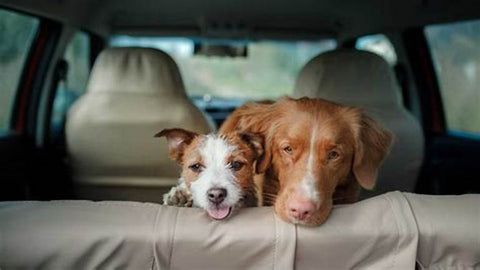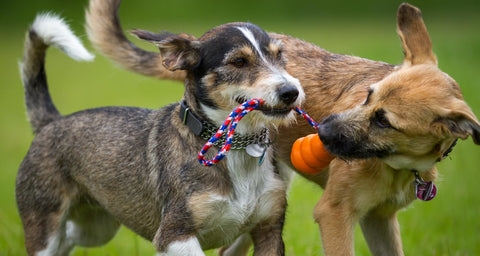Introduction
Begin by explaining the benefits of having a dedicated outdoor play area for dogs. Highlight how such a space can provide physical exercise, mental stimulation, and a safe environment for dogs to enjoy the outdoors. Emphasize the importance of safety, comfort, and fun in designing an ideal play area.
Benefits of an Outdoor Play Area for Dogs
1. Physical Exercise
- Health Benefits: Explain how regular physical activity can help maintain a healthy weight, improve cardiovascular health, and strengthen muscles.
- Energy Outlet: Discuss how an outdoor play area provides an outlet for excess energy, reducing the likelihood of destructive behaviors.
2. Mental Stimulation
- Enrichment: Highlight the importance of mental stimulation for dogs, including the use of toys and obstacles to keep their minds active.
- Reduced Boredom: Explain how a well-designed play area can prevent boredom and the associated negative behaviors.
3. Safety and Supervision
- Controlled Environment: Emphasize the benefits of a controlled environment where dogs can play safely without the risks associated with public spaces.
- Supervised Play: Discuss the importance of supervising playtime to ensure the dog’s safety and to intervene if necessary.

Planning Your Dog's Outdoor Play Area
1. Choosing the Right Location
- Accessibility: Recommend selecting a location that is easily accessible from the house, allowing for convenient supervision and quick access.
- Size Considerations: Discuss the importance of providing ample space for the dog to run and play, considering the dog’s size and activity level.
- Shade and Sun: Highlight the need for both shaded and sunny areas to keep the dog comfortable in different weather conditions.
2. Fencing and Boundaries
- Secure Fencing: Emphasize the importance of a secure fence to prevent the dog from escaping and to keep out unwanted animals.
- Height and Material: Discuss appropriate fence heights and materials to ensure durability and safety.
- Gates and Entrances: Explain the importance of secure gates and entrances, including self-closing and locking mechanisms.
Designing the Play Area
1. Ground Cover Options
- Grass and Turf: Discuss the benefits of natural grass and artificial turf, including comfort and ease of maintenance.
- Gravel and Mulch: Highlight the use of gravel or mulch as ground cover, considering factors like drainage and ease of cleaning.
- Concrete and Pavers: Explain the pros and cons of hard surfaces like concrete and pavers, including durability and potential impact on the dog’s joints.
2. Shade and Shelter
- Natural Shade: Recommend planting trees or using existing natural shade to provide cool areas for the dog.
- Artificial Shelter: Discuss the use of shade structures, awnings, and dog houses to protect the dog from extreme weather conditions.
3. Water Features
- Drinking Stations: Emphasize the importance of providing fresh water at all times, including the use of automatic water dispensers.
- Splash Pools: Discuss the benefits of splash pools or water sprinklers for keeping the dog cool and entertained during hot weather.

Safety Considerations
1. Avoiding Toxic Plants
- Safe Landscaping: Provide a list of common plants that are toxic to dogs and recommend safe alternatives for landscaping.
- Edible Plants: Suggest incorporating dog-friendly edible plants and herbs into the play area for added enrichment.
2. Chemical-Free Zone
- Pesticides and Fertilizers: Highlight the importance of using pet-safe pesticides and fertilizers to prevent poisoning.
- Organic Options: Recommend organic gardening practices and natural pest control methods.
3. Hazard-Free Environment
- Sharp Objects and Debris: Emphasize the need to regularly check the play area for sharp objects and debris that could injure the dog.
- Safe Toys and Equipment: Discuss the importance of choosing durable, non-toxic toys and play equipment to prevent choking and ingestion hazards.
Adding Fun Elements
1. Agility Equipment
- Jumps and Tunnels: Explain how agility equipment like jumps, tunnels, and weave poles can provide physical and mental stimulation.
- DIY Agility Course: Suggest DIY options for creating an agility course using household items.
2. Interactive Toys
- Fetch and Tug Toys: Recommend interactive toys that encourage physical activity and play, such as fetch and tug toys.
- Puzzle Toys: Highlight the benefits of puzzle toys for mental stimulation and enrichment.
3. Digging Zone
- Designated Digging Area: Discuss the benefits of providing a designated digging area to satisfy the dog’s natural instincts while protecting the rest of the yard.
- Sandboxes: Suggest using sandboxes or designated dirt areas as digging zones.
Maintaining the Play Area
1. Regular Cleaning and Upkeep
- Waste Management: Emphasize the importance of regular waste removal to maintain a clean and hygienic play area.
- Cleaning Surfaces: Provide tips on cleaning different ground covers and equipment to prevent odors and bacteria buildup.
2. Seasonal Maintenance
- Winter Preparation: Discuss steps to prepare the play area for winter, such as removing water features and protecting plants.
- Summer Care: Highlight the importance of providing extra shade and water during hot weather and maintaining the ground cover.
3. Health and Safety Checks
- Regular Inspections: Recommend conducting regular inspections of the play area to check for hazards and ensure all equipment is in good condition.
- Vet Visits: Emphasize the importance of regular vet visits to ensure the dog is healthy and up-to-date on vaccinations and parasite prevention.

Case Studies and Testimonials
1. Real-Life Experiences
- Owner Testimonials: Share testimonials from dog owners who have successfully set up safe and enjoyable outdoor play areas for their pets.
- Positive Outcomes: Highlight the positive outcomes and benefits observed, such as improved behavior, increased physical activity, and happier pets.
2. Case Studies
- Success Stories: Provide detailed case studies of well-designed play areas, showcasing the different elements and features that contribute to their success.
- Before and After: Include before and after stories to illustrate the transformation of a yard into a dog-friendly play area.
Conclusion
Summarize the key points about setting up a safe outdoor play area for dogs, emphasizing the importance of planning, safety, and fun. Highlight the benefits of providing a dedicated outdoor space for dogs to enjoy and thrive.
Call to Action
Encourage readers to start planning their outdoor play area for their dogs and to share their experiences or additional tips in the comments section. Invite them to subscribe to the blog for more pet care and home improvement tips.
